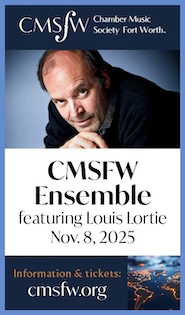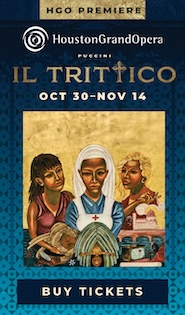DSO, Alsop present elegiac premiere alongside Brahms and Strauss

Guest conductor Marin Alsop led the Dallas Symphony Orchestra Friday night in an engrossing program of pieces including the Brahms’ Symphony No. 2 and Don Juan by Richard Strauss.
The program also offered a world premiere—Drag by Kathryn Bostic, composed for soprano Karen Slack who premiered the work with the DSO.
All three pieces share a mood of elegiac wistfulness, whether toward their subjects in the case of Drag and Don Juan or toward the symphony’s heyday in the case of Brahms’s example.
Drag is an homage to drag “king” Gladys Bentley, a renowned performer in the Harlem Renaissance speakeasy scene who was compelled to closet her sexuality in the less permissive social climate following World War II. The work consistedconsisted of three first-person monologues from the perspective of Bentley that express her bravado as a performer and sardonically describe her adoption of a more socially palatable identity later in her life.
Soprano Slack began Drag unaccompanied, her resonant opening phrases unlocking a meandering vamp from the orchestra that recalled William Grant Still’s Afro-American Symphony.
This prelude led into the first Part in which Alsop and the DSO accompanied Slack with a subtle burlesque as she inflected her vocal arabesques with a hint of bluster before gradually reverting to a more reflective declamation as the orchestra similarly shifted to sustained, restrained sonorities. The concluding Part followed a similar contour, with Slack’s caustic vocals buoyed by a sauntering rhythm from the orchestra that gave way to muted chords sounding under her pensive musings and then joining her in a final, defiant exclamation.
Slack’s voice sounded full and rich and the DSO’s execution was solid. That said, the comparatively ascetic melodies and harmonies throughout the piece imbued it with an austerity and restraint that seemed to restrict and even obscure the sense of Bentley’s lively spirit that the piece aims to celebrate.
In contrast to Mozart’s debauched libertine, Strauss’s Don Juan is on a quest for the love of the ideal woman, and the failure of his search elicits a melancholia that saps his desire to live. The DSO launched the evening’s program with the bold opening of Strauss’s tone poem, Alsop deftly leading the orchestra through the twists and turns of the hero’s theme as it wound its way through the brass and strings.
A short respite from the hero’s tumultuous endeavors made room for hints of romantic liaisons from Nathan Olson’s lyric violin and Mark Debski’s lilting oboe before giving way to a tender solo episode by Debski. Alsop prompted a renewed agitation in the violins, building to a majestic theme from the horns implying Don Juan on the verge of triumph before being interrupted by a brief dissonant passage. Alsop cued the return of the hero’s initial theme, maneuvering it to a grand apotheosis from the brass section before it abruptly subsided into pulsed muted chords conveying Don Juan’s melancholy resignation.
The second half of the program consisted of Brahms’s Symphony No. 2, an ostensibly cheerful piece that Brahms nonetheless described as “elegiac” to his longtime friend Clara Schumann. Alsop’s broad gestures prompted a smooth pastoral sound from the strings and winds during the exposition of the first movement, allowing the wistfulness of the second theme’s hints of minor mode to come through. Her direction became more animated in the restless development, channeling the increased energy to a crescendo leading to the recapitulation and the coda.
Alsop brought an equally pastoral lyricism for the Adagio, enhancing its own bittersweet character resulting from an enigmatic succession of keys. The winds opened the ambling Allegretto, pausing at Alsop’s direction to engage in a pair of brisk yet delicate dialogues with strings before reprising the Allegretto theme.
The finale’s opening recalled the pastoral character of the first movement, but the abrupt forte at the onset of the transition triggered a burst of energy from the DSO that Alsop channeled into the remainder of the movement, adroitly guiding the sections of the ensemble as they exchanged and manipulated fragments of the finale’s principal theme. The arrival of the coda further escalated the movement’s vigor as Alsop and the Dallas Symphony navigated to a blazing final cadence.
The program will be repeated 7:30 p.m. Saturday and 2 p.m. Sunday. dallassymphony.org


